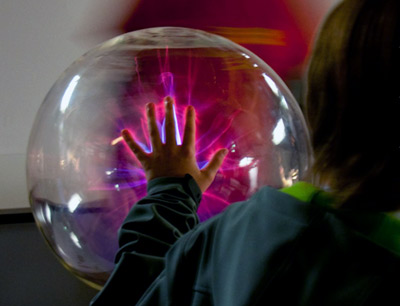Mysterious ball lightning: Illusion or reality?

Physicists Josef Peer and Alexander Kendl from the University of Innsbruck have studied electromagnetic fields of different types of lightning strokes occurring during thunderstorms. Their calculations suggest that the magnetic fields of a specific class of long lasting repetitive lightning discharges show the same properties as transcranial magnetic stimulation (TMS), a technique commonly used in clinical and psychiatric practice to stimulate neural activity in the human brain.
Time varying and sufficiently strong magnetic fields induce electrical fields in the brain, specifically, in neurons of the visual cortex, which may invoke phosphenes. “In the clinical application of TMS, luminous and apparently real visual perceptions in varying shapes and colors within the visual field of the patients and test persons are reported and well examined,” says Alexander Kendl. The Innsbruck physicists have now calculated that a near lightning stroke of long lasting thunderbolts may also generate these luminous visions, which are likely to appear as ball lightning. Their findings are published in the journal Physics Letters A.
Is the mystery of ball lightning solved now?
Ball lightnings are rather rare events. The majority of researchers agree that different phenomena are likely to be summarized under the collective term “ball lightning”. Over time, various theories and propositions about the nature of these experiences have been suggested. Other researchers have produced luminous fire balls in the laboratory, which appeared not completely unlike ball lightning and could explain some of the observations but were mostly too short lived. Other plausible explanations for some of observations are St. Elmo's fire, luminous dust balls or small molten balls of metal.
In which cases then, can a lightning bolt invoke a ball-shaped phosphene? “Lightning strokes with repetitive discharges producing stimulating magnetic fields over a period of a few seconds are rather rare and only occur in about one in one hundred events,“ reports physicist Kendl. “An observer located within few hundred metres of a long lightning stroke may experience a magnetic phosphene in the shape of a luminous spot.“ Also other sensations, such as noises or smells, may be induced. Since the term “ball lightning” is well known from media reports, observers are likely to classify lightning phosphenes as such.
Alexander Kendl’s hypothesis that in fact the majority of ball lightning observations are phosphenes is strongly supported by its simplicity: “Contrary to other theories describing floating fire balls, no new and other suppositions are necessary.”